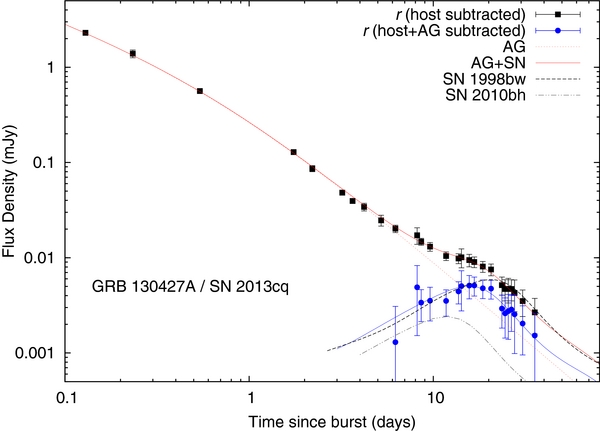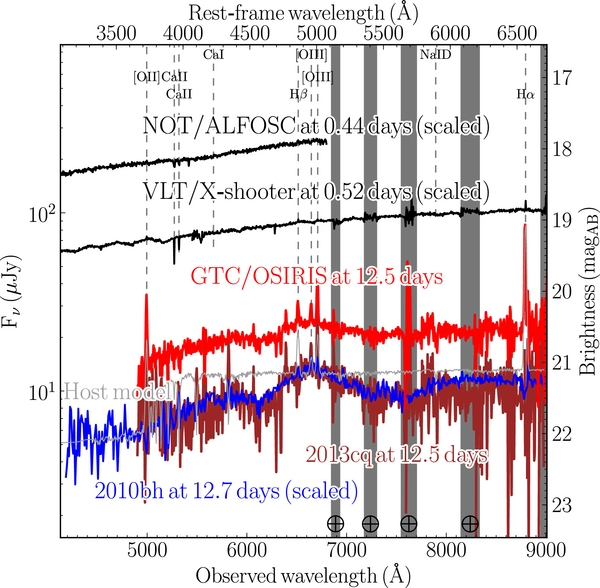
The Nordic Optical Telescope discovers supernova associated with monster Gamma-Ray BurstRelease date: 2013/11/28 On April 27 the Fermi and Swift satellites discovered one of the most luminous gamma-ray bursts ever discovered on Earth. Last week four papers were published in the prestigious Science magazine reporting on the properties of the gamma-ray burst GRB 130427A and its afterglow observed over a very broad range of frequencies from optical light to high-energy γ-rays. One of the most important discoveries related to this burst was carried out with the Nordic Optical Telescope in concert with the Gran Telescopio Canarias, namely the detection of the supernova associated with the burst, the tell-tale signature that an exploding star was the origin of the burst. Gamma-ray bursts (GRBs) are energetic eruptions in gamma-rays that briefly light up the gamma-ray sky. For decades following their discovery in the late 1960s, their origin has remained a complete mystery. In the late 1990s it was established that GRBs originate from the most distant reaches of the Universe. They are therefore the most luminous known objects, and they are also extremely rare, occurring in typical galaxies only once every several million years. Only occasionally do these extreme explosions occur in the more nearby galaxies. In these cases, we not only detect extremely bright bursts here on Earth, but we also have the opportunity to study what exactly happened in the explosion. In the case of the gamma-ray burst from April 27 2013, designated GRB 130427A, a team led by Dong Xu from the Dark Cosmology Centre in Copenhagen used the Nordic Optical Telescope and the Gran Telescopio Canarias to discover and characterize the Broad-lined Type Ic supernova (SN2013cq) that accompanied this relatively nearby (z=0.34) gamma-ray burst. A supernova is the light emitted by an exploding star at the end of its life, and its detection provides a direct clue to the progenitor of the GRB. The discovery of a SN associated with this GRB is important, as it establishes clearly that these extremely bright bursts are formed by the same class of very massive, hydrogen-stripped stars as other much less extreme gamma-ray bursts that we had previously studied at similar distances. Given that this GRB is similar in properties to the bulk of the population of gamma-ray bursts seen in the more distant Universe, this discovery puts us a step closer to understanding the GRB phenomenon in general. In particular, we can now be more confident of the nature and origin of distant GRBs, and we can exploit them as valuable probes of the most remote and ancient parts of the Universe.   |
||
|